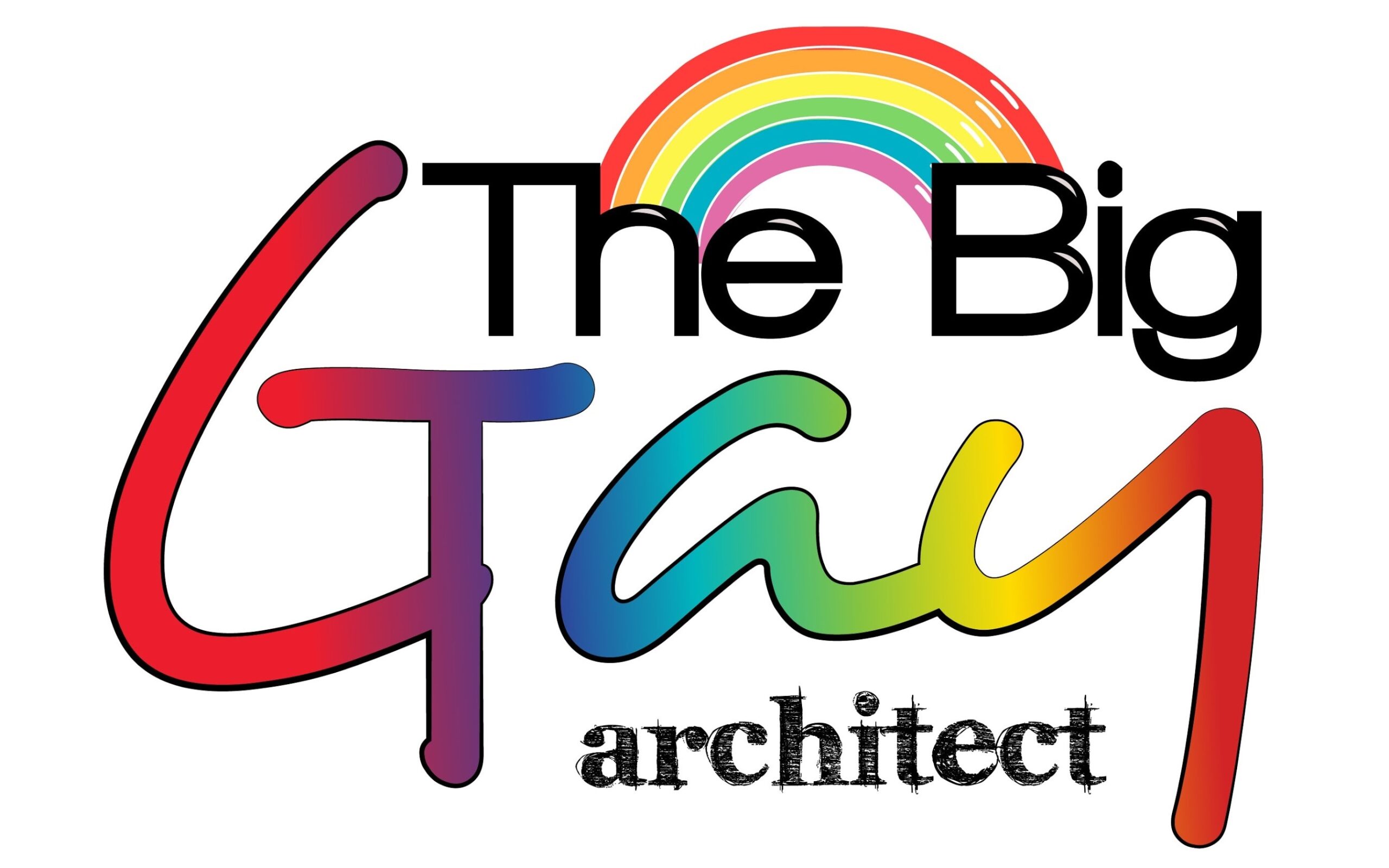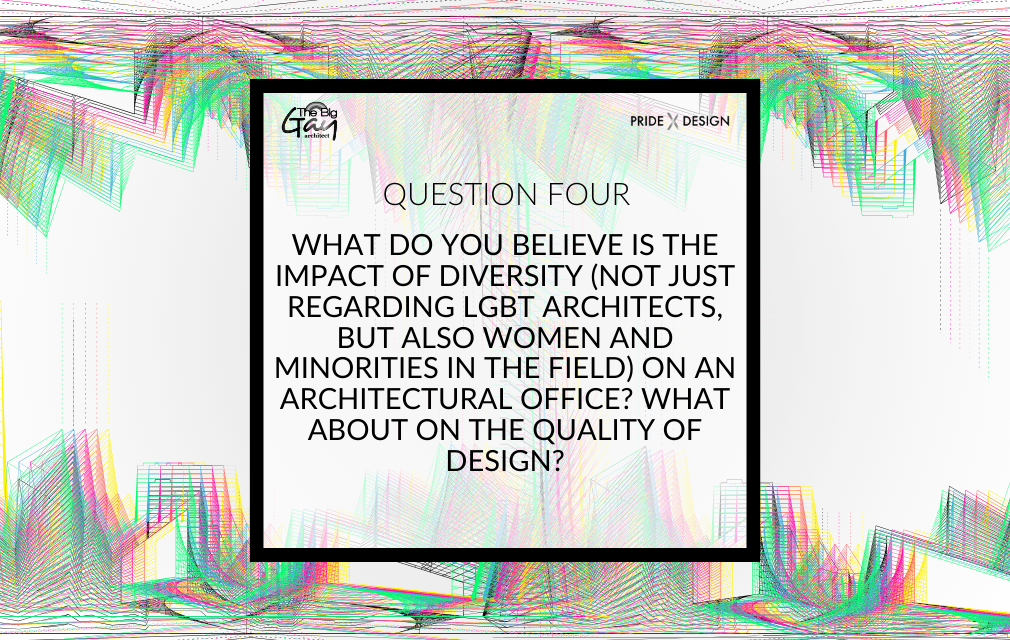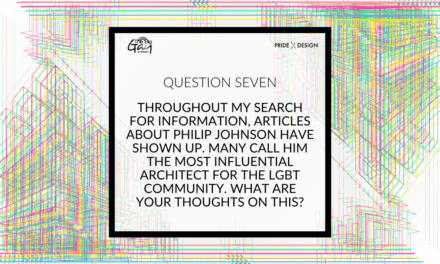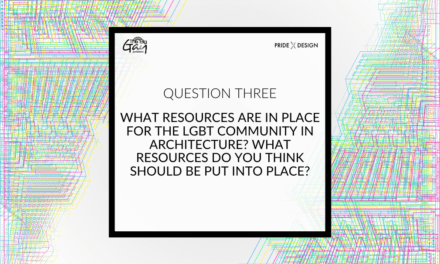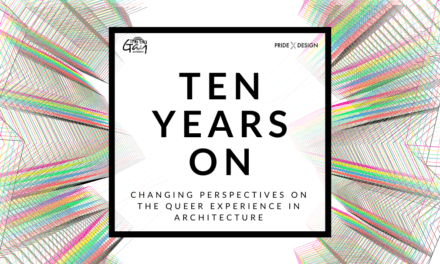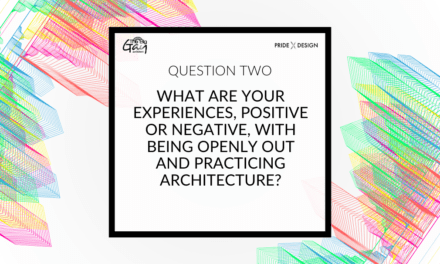Question 4: What do you believe is the impact of diversity (not just regarding LGBT architects, but also women and minorities in the field) on an architectural office? What about on the quality of design?
Who knew when this question was asked in 2013 that diversity would become such a hot (and highly contested – if that was even a thing) topic in legislatures across the country in 2023? But here we are with Republican-controlled states ripping equity, diversity, and inclusion programs from state-funded organizations – including universities and colleges – in an effort to end “woke-ism.”
Cue the eyeroll.
However, when talking about diversity and the impact on architecture offices, we didn’t see any pushback on the importance of diversity. On the necessity to have a workplace with varied backgrounds and life experiences. Overall, responses were overwhelmingly positive.
“It’s inherently beneficial.”
“It’s a huge impact!”
“It is everything.”
“Diversity only improves the profession…”
Of course! Architects working in the public arena will tell you that stakeholder input is invaluable. And with few exceptions, we don’t operate within a single demographic. This is no longer 1950’s suburbia where everyone is white and middle-class. And even then, architects were still designing for a much more diverse community. Architecture must take into account everyone who will be interacting with a building, who will be utilizing the spaces we’re designing. As one survey respondent so eloquently noted:
“No one community is a monolith (maybe straight old white guys)…”
So why would we continue to operate a firm with only one perspective? How would a limited vision of what architecture can be benefit the community as a whole? How can we deny that diversity has an impact on design?
“We are designing for a diverse population and so should be designing as a diverse designer group.”
“Society is diverse and will continue to become more diverse. If we want to be the best in our field, we need diverse teams with ideas that represent this ever-changing society.”
“Diversity only improves the profession, it improves design, and it creates architecture that represents a population we design for.”
“If a firm only has cis-white men designing, then you will get a building designed for cis-white men only.”
“As the only woman, the only Gen Z, and the only queer person working at my firm, I can tell they’re missing expertise and knowledge from diverse backgrounds, people that think different than them and start challenging their ideas.”
That said, diversity within an office has a broader impact beyond design. For us, seeing ourselves represented within the profession can be crucial to how we develop professionally.
“When you are “the only” it can affect how you feel, if you are comfortable. If you aren’t comfortable or being yourself, you are likely also not contributing with your full abilities.”
“For a long time I was the only racial minority in my office, and I felt it added so much pressure on me, on top of being one of 2 queer minorities. Once we started to hire some more minorities it felt easier to talk design in more varied strategies that spoke to more people”
“…diversity provides great role models for architects who are new to the profession.”
And diversity also affects how we work with our clients. Not because queer architects, Black architects, non-binary architects, or women architects are inherently better at design. But because diversity within firms brings a different perspective to the table that clients can relate to and appreciate.
“It impacts how clients relate to us – the feedback I am given in a stakeholder meeting is different than to my straight, male coworker.”
“It has also led to a greater appreciation by clients to have not only diverse teams design and construct their projects, but to ensure community outreach and input is brought into the dialogue when shaping public projects.”
Diversity is the coming together of the lenses in which each of us sees and experiences the world. Reading through this week’s responses showed how much queer architects value the importance of having a varied workforce, how much that impacts design and community, and how that impacts them individually in a studio environment.
When truly ensuring teams are diverse, doors begin to open more broadly to ask whose story is being shared. How can we each approach the stories others have (because everyone has a story) with curiosity? What is our role, as architects, to ensure there is intentionality, the space, and the safety in conversation and collaborations with the teams, the clients, and the communities we all work in?
While we will continue working to understand the importance of diversity in architecture – and we could spend another 1500 words discussing this – we thought we would do something different to close out this week’s blog. Usually, we share parts and pieces from different participants throughout each blog. However, we had one answer we felt summed up the entire conversation around diversity, and we want to share that in its entirety.
What do you believe is the impact of diversity (not just regarding LGBT architects, but also women and minorities in the field) on an architectural office? What about on the quality of design?
“Oof, that’s a question and a half… I think any office without good representation will lack the kind of depth that is necessary for a good conversation, and I say that because good design is the result of good conversation. Operating as a designer in a homogenous silo is stifling. Without diversity, we only have a single frame of reference to address a narrow set of challenges, which results in unsuccessful designs. When people from diverse communities come together in the same room, we are forced to recognize the breadth of each other’s struggles – how we move through space – and how that can be reconciled through design to ultimately build a better world.”
